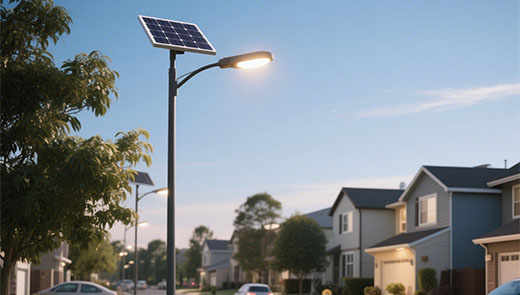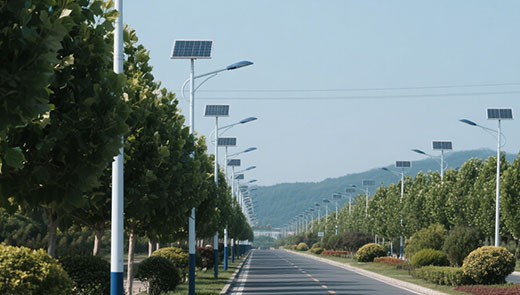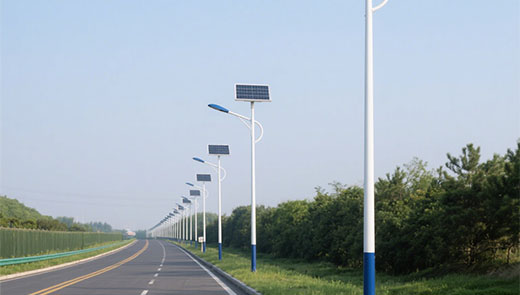Impact of rainy days on solar street lights
Oct 25, 2024
Solar street lights, as a lighting system powered by solar energy, are widely used in urban and rural road lighting due to their environmental protection and energy-saving characteristics. However, rainy days will have a certain impact on the working efficiency of solar street lights. This article will discuss in detail the impact of rainy days on solar street lights and introduce how to deal with these problems through technology and design.
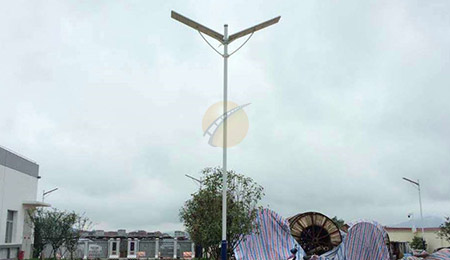
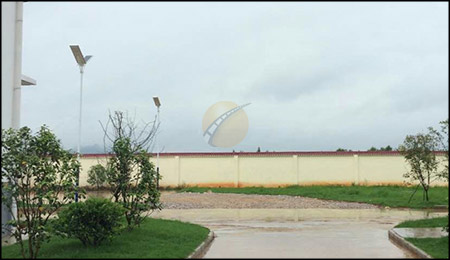
With the continuous development of solar energy technology, many new materials and technologies are being applied to solar street lights. For example, the photoelectric conversion efficiency of some photovoltaic technologies under weak light conditions has been greatly improved, and solar cells that are more suitable for use in rainy weather may be developed in the future. At the same time, the application of wireless power transmission or hybrid energy systems (such as wind energy + solar energy) will also provide more possibilities for solving the battery life problem of solar street lights in rainy weather.
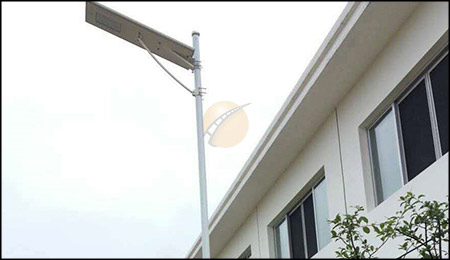
Although rainy days will have a certain impact on the charging efficiency and battery life of solar street lights, by optimizing the efficiency of solar panels, increasing battery energy storage capacity, strengthening waterproof design and the application of intelligent control systems, solar street lights can still maintain good working conditions on rainy days. With the continuous advancement of technology, future solar street lights will be more intelligent, environmentally friendly and efficient, able to adapt to more complex climatic conditions, and further promote the widespread application of renewable energy.
1. Impact of rainy days on solar street lights
1.1 Insufficient light affects charging efficiency
The power of solar led street lights comes from solar panels, which absorb sunlight and convert it into electrical energy. On rainy days, the lighting conditions of solar panels deteriorate, resulting in a decrease in their conversion efficiency, which in turn affects the battery charge. If it rains for many consecutive days, the battery may not be able to supply enough power due to insufficient power, thereby shortening the lighting time at night.1.2 Increased battery life pressure
In rainy weather, although the charging capacity of solar panels is weakened, the power consumption of lamps has not decreased. In this case, the street light system needs to rely on the stored power of the built-in battery for power supply. If the battery capacity is not large enough to cope with continuous rainy days, the street lights may go out early or the brightness may decrease, affecting road safety.
1.3 Rain may affect the normal operation of the equipment
Although most solar street lights are designed to be waterproof, if the waterproofing is not perfect or the equipment quality is not up to standard, rain may seep into the battery box or controller, causing equipment damage, short circuit or failure. In addition, rain accumulation may form stains on the panels, affecting their ability to absorb light and further reducing charging efficiency.2. Design measures to deal with the impact of rainy days
2.1 Application of high-efficiency solar panels
To solve the problem of insufficient light on rainy days, modern solar outdoor lights mostly use high-efficiency solar panels, which can maximize the absorption of sunlight even in cloudy and low-light conditions to ensure the charging efficiency of the battery. At the same time, the design of the installation angle and position will also take into account the maximum acquisition of sunlight to ensure that the street lights can obtain enough light energy on rainy days.2.2 Increase battery capacity
In order to cope with the power supply problems that may occur in continuous rainy weather, many solar street light systems are designed with large-capacity lithium batteries or other energy storage batteries to store more power on sunny days, ensuring that lighting can continue to be provided during consecutive days of rain. In addition, an intelligent power management system can be introduced to optimize power use and reduce waste.
2.3 Strengthen waterproof design
In response to the potential damage of rain to the equipment, solar road lights usually adopt IP65 or higher protection level design to ensure that they have sufficient waterproof and dustproof capabilities. This means that the equipment can effectively prevent the intrusion of rainwater and ensure the stable operation of the system in bad weather. At the same time, regular cleaning of dirt and water on the solar panels can also ensure the long-term normal operation of the equipment.2.4 Introduction of intelligent control system
Modern solar street light systems are usually equipped with intelligent controllers. When the power is insufficient, the controller will automatically adjust the brightness or working time of the street light according to the actual power situation to extend the operating time of the lamp. This intelligent control can effectively reduce energy waste on rainy days and ensure that the solar street light can still perform basic lighting functions even when the charging efficiency is low.
3. Future technology development direction
With the continuous development of solar energy technology, many new materials and technologies are being applied to solar street lights. For example, the photoelectric conversion efficiency of some photovoltaic technologies under weak light conditions has been greatly improved, and solar cells that are more suitable for use in rainy weather may be developed in the future. At the same time, the application of wireless power transmission or hybrid energy systems (such as wind energy + solar energy) will also provide more possibilities for solving the battery life problem of solar street lights in rainy weather.

Although rainy days will have a certain impact on the charging efficiency and battery life of solar street lights, by optimizing the efficiency of solar panels, increasing battery energy storage capacity, strengthening waterproof design and the application of intelligent control systems, solar street lights can still maintain good working conditions on rainy days. With the continuous advancement of technology, future solar street lights will be more intelligent, environmentally friendly and efficient, able to adapt to more complex climatic conditions, and further promote the widespread application of renewable energy.

